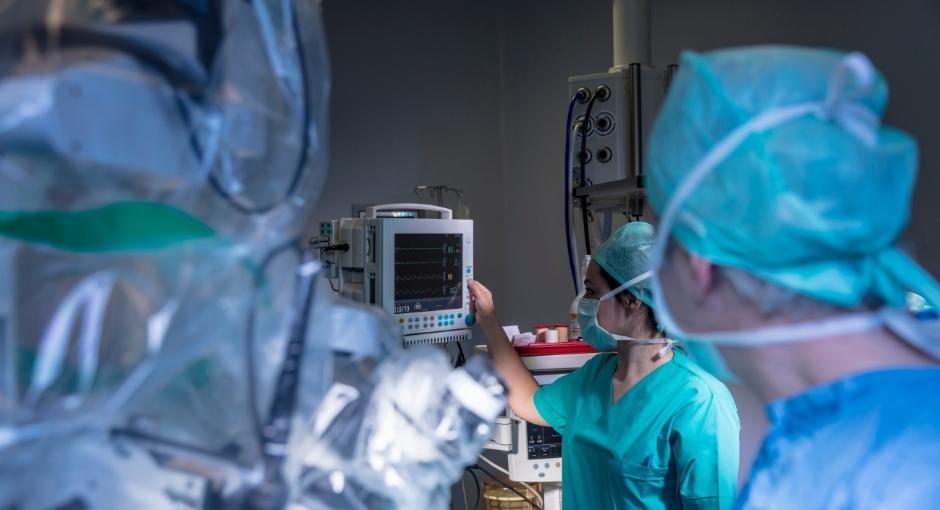Other Surgical Options
💡 Quick Summary
-
Less common Parkinson’s surgeries like focused ultrasound, thalamotomy, pallidotomy and subthalamotomy may reduce tremor or motor fluctuations when medications and standard treatments are no longer effective.
-
Focused ultrasound is non-invasive and FDA-approved for medication-resistant tremor.
-
These treatments are rarely performed, as deep brain stimulation (DBS) or Duopa are more common for people with Parkinson’s.

In addition to deep brain stimulation (DBS) surgery and Duopa™ therapy, there are several less common surgical treatments that can help reduce some Parkinson’s disease (PD) symptoms. Like DBS and Duopa, these treatments are reserved for those who have exhausted medical treatment of Parkinson’s tremor or who live with extreme “on-off” times (motor fluctuations).
Focused Ultrasound
- Guided by magnetic resonance imaging (MRI), high-intensity, inaudible sound waves are emitted into the brain. Where these waves cross, they create high energy. This high energy creates heat, destroying a very specific area in the brain connected to tremor.
- Focused ultrasound uses computer software through an MRI. It is considered non-invasive because it does not involve incisions or holes in the skull.
- The Food and Drug Administration (FDA) has approved the procedure for those with Parkinson’s tremor refractory to medications.
Thalamotomy
- A type of brain surgery in which the thalamus, a tiny area of the brain, is lesioned.
- Before surgery, detailed brain scans using a CT scan or MRI identify the precise location for treatment.
- Surgery on one side of the brain affects the opposite side of the body. If you have tremor in your right hand, for instance, the left side of your brain will be treated.
- The procedure can be repeated on the other side of the brain if needed, but it greatly increases the risk of speech and cognitive problems after surgery if both sides are done.
Pallidotomy
- In a pallidotomy, the surgeon lesions a tiny part of the globus pallidus by creating a scar.
- This reduces the brain activity in that area, which may help relieve movement symptoms such as tremor, stiffness and slowness.
- Before surgery, detailed brain scans using MRI identify the precise location for treatment.
- Most likely not a good option for treatment when a person has not responded to levodopa.
- Surgery on one side of the brain affects the opposite side of the body. If you have tremor in your right hand, for instance, the left side of your brain will be treated
The procedure can be repeated on the other side of the brain if needed. Pallidotomy may be considered when a person with advanced PD disease has:
- Severe motor fluctuations, such as dyskinesia and on-off responses, due to long-term levodopa treatment.
- Severe or disabling tremor, stiffness (rigidity) or slow movement (bradykinesia) medication can no longer control.
Subthalamotomy
- Subthalamotomy is a type of brain surgery in which the subthalamus, a tiny area of the brain, is destroyed.
- Before surgery, detailed brain scans using a CT scan or MRI identify the precise location for treatment.
- Surgery on one side of the brain affects the opposite side of the body. If you have tremor in your right hand, for instance, the left side of your brain will be treated.
- The procedure can be repeated on the other side of the brain if needed, but it greatly increases the risk of speech and cognitive problems after surgery.
Page reviewed by Dr. Chauncey Spears, Clinical Assistant Professor at the University of Michigan.
Related Materials
Related Blog Posts

Neuro Talk: Surgical Options

What’s Hot in PD? Choosing Between Subcutaneous Apomorphine Infusions, Intestinal Pumps (Duopa) and Deep Brain Stimulation: Implications of the TOLEDO Trial
